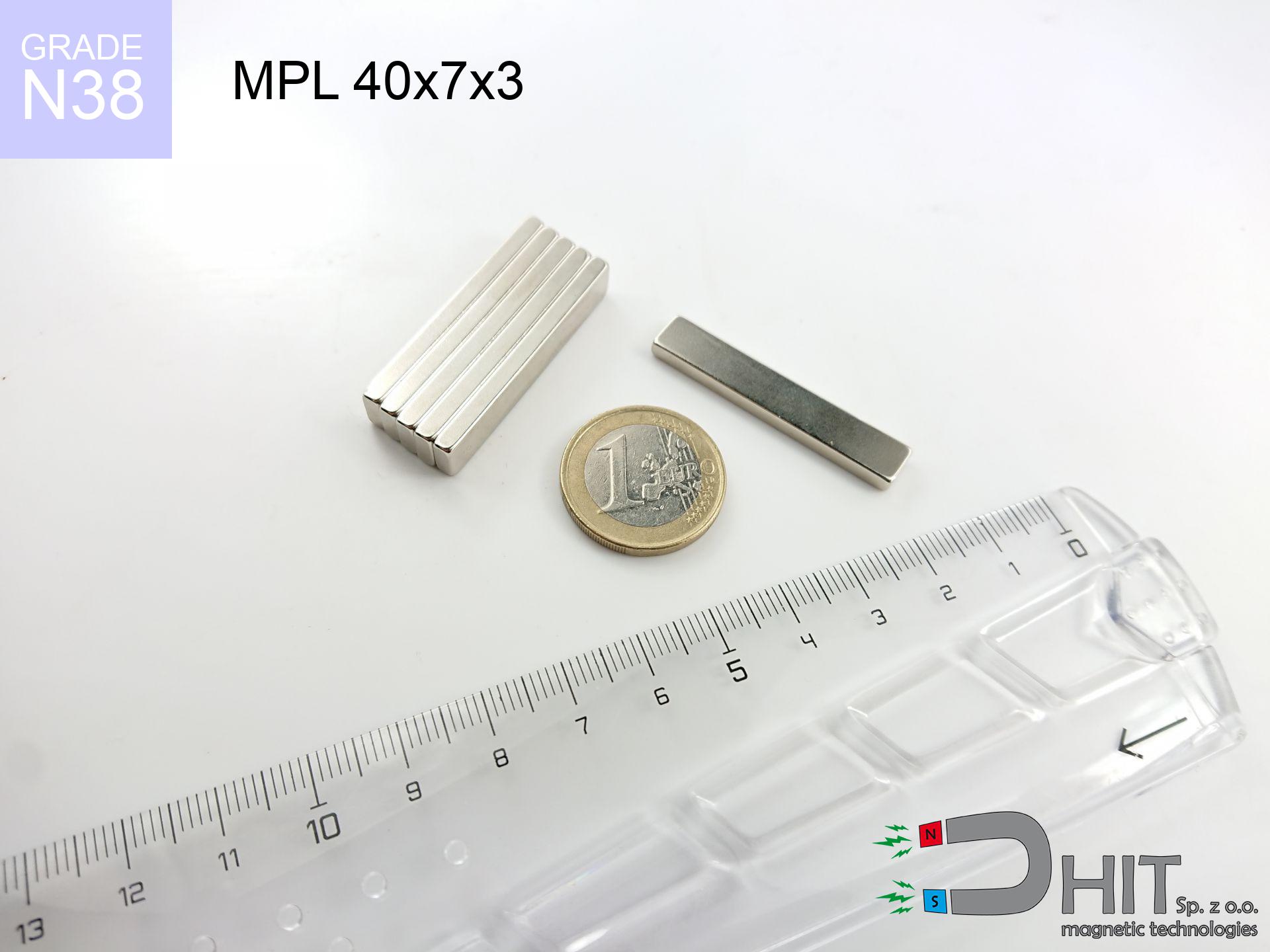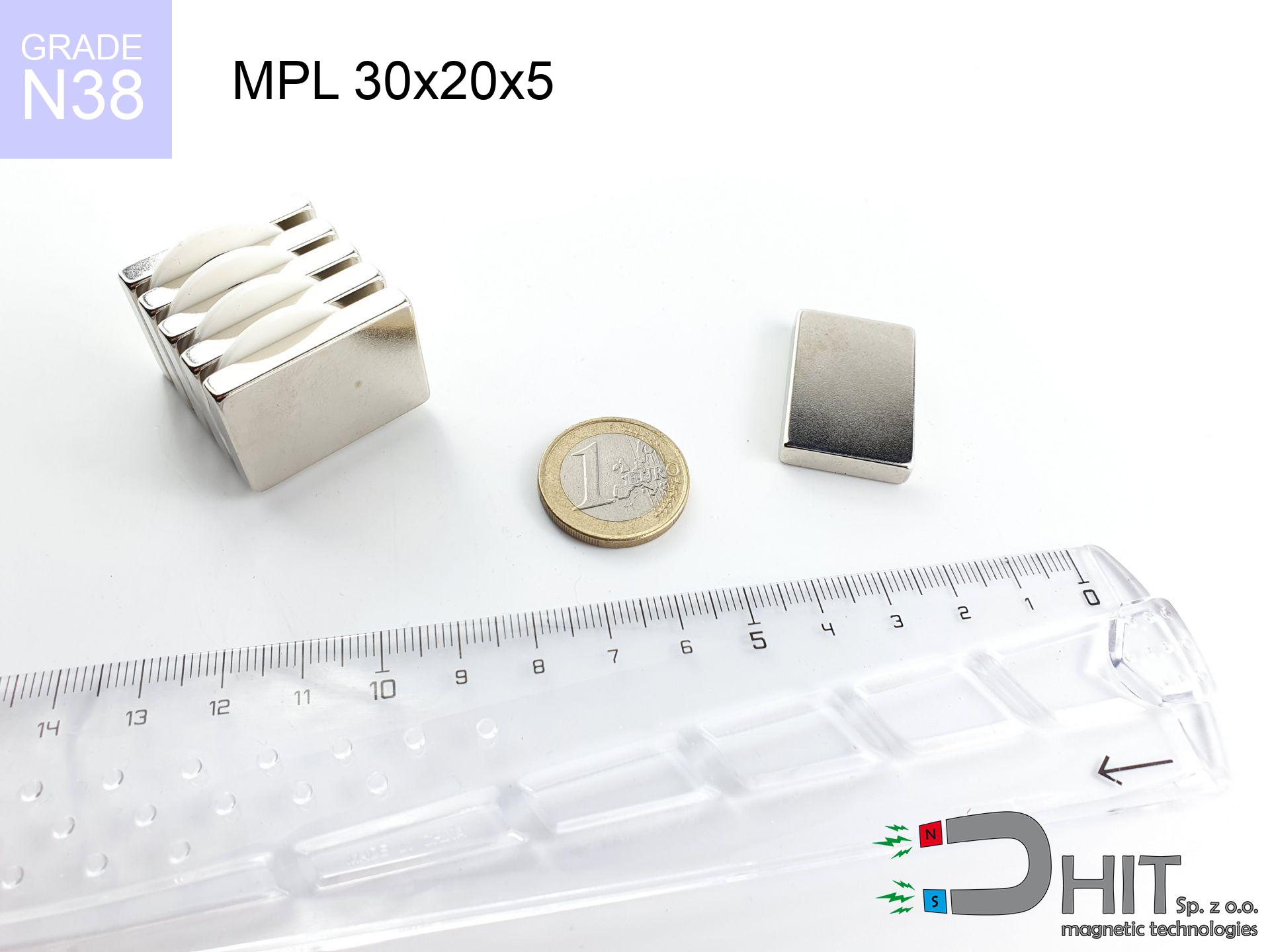SM 32x100 [2xM8] / N42 - magnetic separator
magnetic separator
Catalog no 130296
GTIN/EAN: 5906301812890
Diameter Ø
32 mm [±1 mm]
Height
100 mm [±1 mm]
Weight
536 g
Magnetic Flux
~ 8 000 Gauss [±5%]
307.50 ZŁ with VAT / pcs + price for transport
250.00 ZŁ net + 23% VAT / pcs
bulk discounts:
Need more?
Contact us by phone
+48 22 499 98 98
or let us know using
form
through our site.
Weight along with appearance of a magnet can be calculated with our
magnetic mass calculator.
Order by 14:00 and we’ll ship today!
Technical of the product - SM 32x100 [2xM8] / N42 - magnetic separator
Specification / characteristics - SM 32x100 [2xM8] / N42 - magnetic separator
| properties | values |
|---|---|
| Cat. no. | 130296 |
| GTIN/EAN | 5906301812890 |
| Production/Distribution | Dhit sp. z o.o. |
| Country of origin | Poland / China / Germany |
| Customs code | 85059029 |
| Diameter Ø | 32 mm [±1 mm] |
| Height | 100 mm [±1 mm] |
| Weight | 536 g |
| Material Type | Stainless steel AISI 304 / A2 |
| Magnetic Flux | ~ 8 000 Gauss [±5%] |
| Size/Mount Quantity | 2xM8 |
| Polarity | circumferential - 3 poles |
| Casing Tube Thickness | 1 mm |
| Manufacturing Tolerance | ±1 mm |
Magnetic properties of material N42
| properties | values | units |
|---|---|---|
| remenance Br [min. - max.] ? | 12.9-13.2 | kGs |
| remenance Br [min. - max.] ? | 1290-1320 | mT |
| coercivity bHc ? | 10.8-12.0 | kOe |
| coercivity bHc ? | 860-955 | kA/m |
| actual internal force iHc | ≥ 12 | kOe |
| actual internal force iHc | ≥ 955 | kA/m |
| energy density [min. - max.] ? | 40-42 | BH max MGOe |
| energy density [min. - max.] ? | 318-334 | BH max KJ/m |
| max. temperature ? | ≤ 80 | °C |
Physical properties of sintered neodymium magnets Nd2Fe14B at 20°C
| properties | values | units |
|---|---|---|
| Vickers hardness | ≥550 | Hv |
| Density | ≥7.4 | g/cm3 |
| Curie Temperature TC | 312 - 380 | °C |
| Curie Temperature TF | 593 - 716 | °F |
| Specific resistance | 150 | μΩ⋅cm |
| Bending strength | 250 | MPa |
| Compressive strength | 1000~1100 | MPa |
| Thermal expansion parallel (∥) to orientation (M) | (3-4) x 10-6 | °C-1 |
| Thermal expansion perpendicular (⊥) to orientation (M) | -(1-3) x 10-6 | °C-1 |
| Young's modulus | 1.7 x 104 | kg/mm² |
Table 1: Rod construction
SM 32x100 [2xM8] / N42
| Parameter | Value | Description / Unit |
|---|---|---|
| Diameter (Ø) | 32 | mm |
| Total length | 100 | mm (L) |
| Active length | 64 | mm |
| Section count | 2 | modules |
| Dead zone | 36 | mm (2x 18mm starter) |
| Weight (est.) | ~611 | g |
| Active area | 64 | cm² (Area) |
| Housing material | AISI 304 | 1.4301 (Inox) |
| Surface finish | Ra < 0.8 µm | Polished |
| Temp. class | 80°C | Standard (N) |
| Force loss (at max °C) | -12.8% | Reversible loss (physics) |
| Force (calculated) | 17.3 | kg (theor.) |
| Induction (surface) | ~6 500 | Gauss (Max) |
Chart 2: Field profile (2 sections)
Chart 3: Temperature performance
Chemical composition
| iron (Fe) | 64% – 68% |
| neodymium (Nd) | 29% – 32% |
| boron (B) | 1.1% – 1.2% |
| dysprosium (Dy) | 0.5% – 2.0% |
| coating (Ni-Cu-Ni) | < 0.05% |
Environmental data
| recyclability (EoL) | 100% |
| recycled raw materials | ~10% (pre-cons) |
| carbon footprint | low / zredukowany |
| waste code (EWC) | 16 02 16 |
Other deals
Pros as well as cons of rare earth magnets.
Strengths
- They virtually do not lose strength, because even after 10 years the performance loss is only ~1% (according to literature),
- They are resistant to demagnetization induced by external field influence,
- A magnet with a smooth silver surface looks better,
- Magnets possess extremely high magnetic induction on the active area,
- Through (appropriate) combination of ingredients, they can achieve high thermal resistance, allowing for operation at temperatures approaching 230°C and above...
- Thanks to freedom in forming and the capacity to modify to complex applications,
- Universal use in future technologies – they are commonly used in HDD drives, brushless drives, diagnostic systems, as well as industrial machines.
- Compactness – despite small sizes they provide effective action, making them ideal for precision applications
Limitations
- They are prone to damage upon heavy impacts. To avoid cracks, it is worth protecting magnets in a protective case. Such protection not only shields the magnet but also increases its resistance to damage
- When exposed to high temperature, neodymium magnets suffer a drop in strength. Often, when the temperature exceeds 80°C, their strength decreases (depending on the size and shape of the magnet). For those who need magnets for extreme conditions, we offer [AH] versions withstanding up to 230°C
- They rust in a humid environment. For use outdoors we recommend using waterproof magnets e.g. in rubber, plastic
- Due to limitations in creating nuts and complicated forms in magnets, we recommend using a housing - magnetic mount.
- Potential hazard resulting from small fragments of magnets pose a threat, if swallowed, which is particularly important in the context of child health protection. Furthermore, small components of these products can be problematic in diagnostics medical after entering the body.
- Due to neodymium price, their price exceeds standard values,
Lifting parameters
Detachment force of the magnet in optimal conditions – what it depends on?
- with the contact of a yoke made of special test steel, guaranteeing maximum field concentration
- with a cross-section of at least 10 mm
- with a surface free of scratches
- under conditions of ideal adhesion (surface-to-surface)
- during pulling in a direction vertical to the mounting surface
- in neutral thermal conditions
Impact of factors on magnetic holding capacity in practice
- Clearance – existence of foreign body (rust, dirt, air) interrupts the magnetic circuit, which lowers capacity rapidly (even by 50% at 0.5 mm).
- Angle of force application – maximum parameter is reached only during perpendicular pulling. The resistance to sliding of the magnet along the surface is typically several times smaller (approx. 1/5 of the lifting capacity).
- Metal thickness – thin material does not allow full use of the magnet. Part of the magnetic field penetrates through instead of generating force.
- Material composition – different alloys attracts identically. High carbon content weaken the attraction effect.
- Base smoothness – the smoother and more polished the surface, the larger the contact zone and higher the lifting capacity. Roughness creates an air distance.
- Heat – NdFeB sinters have a negative temperature coefficient. When it is hot they lose power, and in frost gain strength (up to a certain limit).
Lifting capacity was assessed with the use of a steel plate with a smooth surface of optimal thickness (min. 20 mm), under perpendicular detachment force, however under parallel forces the lifting capacity is smaller. Additionally, even a minimal clearance between the magnet and the plate lowers the lifting capacity.
Safe handling of NdFeB magnets
Safe distance
Data protection: Strong magnets can ruin data carriers and delicate electronics (heart implants, hearing aids, timepieces).
Crushing force
Pinching hazard: The pulling power is so great that it can result in blood blisters, pinching, and broken bones. Protective gloves are recommended.
Heat warning
Regular neodymium magnets (N-type) lose power when the temperature exceeds 80°C. This process is irreversible.
Warning for heart patients
Individuals with a pacemaker have to maintain an large gap from magnets. The magnetic field can disrupt the operation of the implant.
Protective goggles
Despite the nickel coating, the material is brittle and not impact-resistant. Avoid impacts, as the magnet may crumble into sharp, dangerous pieces.
Allergic reactions
It is widely known that the nickel plating (standard magnet coating) is a common allergen. If your skin reacts to metals, refrain from touching magnets with bare hands or select coated magnets.
Powerful field
Exercise caution. Rare earth magnets act from a distance and connect with huge force, often faster than you can move away.
Dust is flammable
Combustion risk: Neodymium dust is explosive. Avoid machining magnets in home conditions as this may cause fire.
GPS Danger
GPS units and mobile phones are highly sensitive to magnetism. Close proximity with a powerful NdFeB magnet can ruin the internal compass in your phone.
Do not give to children
Product intended for adults. Tiny parts pose a choking risk, causing severe trauma. Keep out of reach of children and animals.

![Separation magnetic rod SM 32x100 [2xM8] / N42 Separation magnetic rod SM 32x100 [2xM8] / N42](https://cdn3.dhit.pl/graphics/banners/magnet.webp)
![SM 32x100 [2xM8] / N42 - magnetic separator](https://cdn3.dhit.pl/graphics/products/sm-32x100-2xm8-cox.jpg)





